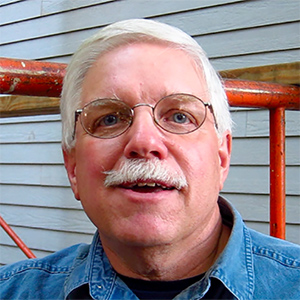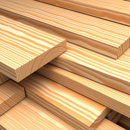Ask the Builder: Effective drainage depends on proper design and use of materials
Water drainage is misunderstood by many homeowners, builders, YouTube personalities and building inspectors, if my email in-box is any indicator. I’ve lost count of the thousands of drainage help requests entered on the Ask Tim page of my AsktheBuilder.com website.
Geology was my college major, with a specific focus on hydrogeology. That’s the discipline of subsurface groundwater and groundwater movement. I was also a young builder when geo-textile fabrics were becoming mainstream in road and parking lot construction. They’re often required to block silt from flowing overland on construction sites. Let that sink in.
Many building and landscaping products are designed with a specific purpose in mind, and they perform well, but they can cause problems when used in ways that are not recommended. This has happened, in my opinion, with the use of geo-textile fabrics in drainage systems. Allow me to explain.
The first thing to understand about subsurface water movement is that it doesn’t always head straight down to the center of the Earth. In almost all cases, water starts to move sideways or downslope through the soil. This movement happens when the B soil horizon has a clay content. The clay layer under the A horizon (the topsoil) prevents water from moving down. Water, like most things, loves to travel in the path of least resistance.
Topsoil acts like an air filter in your furnace or AC air handler. It captures tiny silt particles that get disturbed in periods of heavy rainfall. Water flowing over the surface of the ground gets fouled with silt in storms. This is why the water in creeks, brooks, and streams turns muddy during and just after a big storm. Forty-eight hours after the storm has passed that same water will be clear. My guess is you’ve never pondered why.
Clear water in wells and streams is additional proof that topsoil captures silt particles. If silt stayed in groundwater as it moved underground, wells and natural springs would be cloudy. The water would be unpleasant to drink.
The last piece of the puzzle is fluffed soil or dirt. When you dig undisturbed soil during construction, you increase its volume by about 10%. The soil that was protected by the topsoil is now exposed to the destructive force of raindrops and overland water flow. This explains why governments want silt fences erected around construction sites. They want that silt to stay put on the construction site.
This fluffing happens a second time when the dirt is placed alongside a foundation. Decades before geo-textile fabrics were invented, builders placed one foot of dry straw on top of the coarse gravel that sat on top of the drain tile at the base of the foundation. The straw acted like the topsoil and prevented the silt from fouling the gravel and clogging the drain tile.
Many experts agree on the best way to place 4-inch drain tile at the bottom of a foundation. It should be placed on top of 4 inches of coarse gravel. This gravel should be free of any sand or fines. It should be the size of green grapes or small walnuts. It can be rounded or crushed stone. Water flows through this gravel like it does through a large kitchen colander with big holes. This is exactly what you want: rapid water movement.
The top of the drain tile pipe should be no higher than the top of the concrete footing. This assumes the interior slab of a basement or crawlspace sits on top of the footing. The holes in the perforated pipe should aim down. Use an analog clock face as your north star. The holes should be placed in the same orientation of the numbers 4 and 8 on a clock face.
Many builders and laborers put the perforated drain pipe upside down with the hole pointing up. This allows gravel to block the holes, which prevents water from entering the conduit. I’ve seen builders place geo-textile fabric on the dirt under the gravel below the pipe. This is a complete waste of material and time. The first few inches of gravel can rest on the undisturbed soil that the footing rests on.
The drain tile pipe doesn’t need to be sloped like a plumbing drain pipe. It can be level around the perimeter of the footing. Water flows through this pipe the same way it moves across the surface of a lake to the overflow point. Once the drain tile is extended to daylight beyond the foundation, you can transition to solid pipe. Slope this pipe 1/4 inch per foot to promote rapid water to flow away from the foundation.
It’s best practice to install 2 or 3 feet of the coarse gravel on top of the drain tile pipe. The more you put, the better. Years ago, a homeowner I worked for wanted no water entering his basement. He paid extra to put the gravel up to within 6 inches of the top of the grade around the house. This gravel should be covered with straw or the geo-textile to ensure the silt in the fluffed backfill doesn’t travel into the gravel.
Does it now make sense to you why you don’t want to put a sock on a drain tile pipe next to a footing or in a linear french drain? How about lining a french drain trench with geo-textile fabric? That’s also a mistake. The water flowing toward the french drain is clear. If it does have any silt, the fabric will trap it and get clogged, and then no water will be able to enter the french drain pipe. This defeats the purpose of the french drain, for goodness sake.
Subscribe to Tim’s FREE newsletter at AsktheBuilder.com. Tim offers phone coaching calls if you get stuck during a DIY job. Go here: go.askthebuilder.com/coaching
©2024 Tim Carter. Distributed by Tribune Content Agency, LLC.






























Comments